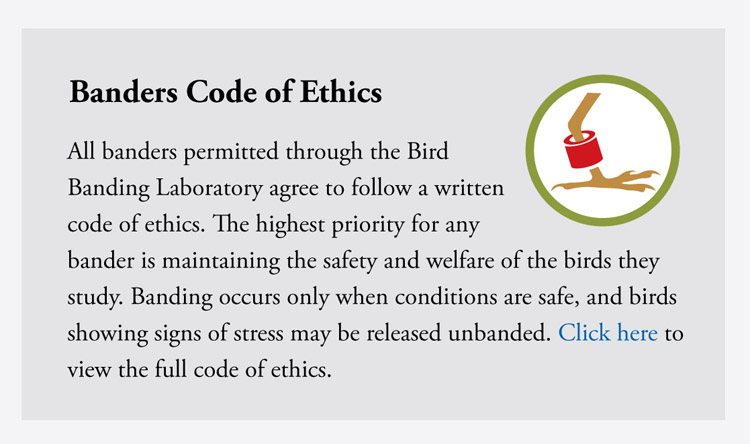Celebrating the Centennial Anniversary of the USGS Bird Banding Lab
It’s a cool, brisk fall morning out at Barr Lake State Park. The banding crew has arrived before sunrise to begin the morning routine; walk the net-lanes, shake the dew off the nets, open them up, then wait to see what the day will bring. Fall migration is an exciting time for birders and banders alike. Perhaps a rare warbler or vireo will show up and test our knowledge of drab fall plumages. Or maybe we’ll see that first big push of late-season sparrows, as the juncos and White-crowned Sparrows move in for the winter. Each morning begins with anticipation of what may come, what little feathered friend will delight us today? For 32 years and counting, this morning ritual has been playing out each fall at Barr Lake, our longest-running banding station.
All of Bird Conservancy’s banding projects, indeed all banding projects in both the United States and Canada, are conducted in partnership with the Bird Banding Laboratory, currently celebrating its 100th year of operation. While marking wild birds has been in practice for considerably longer, the Bird Banding Laboratory was founded in 1920 to standardize the process and serve as a single distributor of bands and repository of banding data. The lab is housed at the U.S. Geological Survey Patuxent Wildlife Research Center in Laurel, MD and coordinates with the Canadian Wildlife Service to oversee banding efforts across North America.
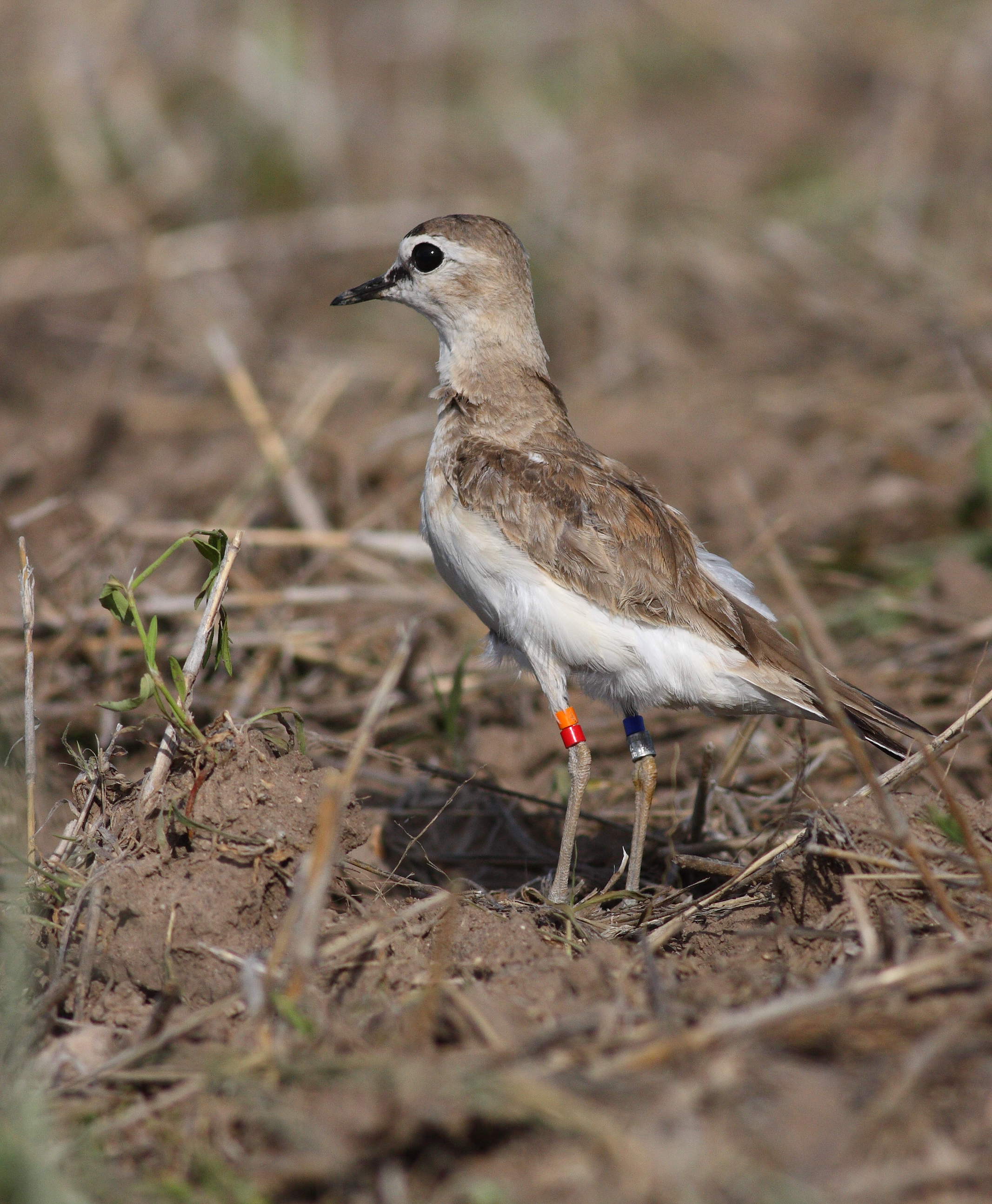
Banded Mountain Plover. Photo: Colin Woolley
What makes bird banding such a powerful research tool?
Banding helps us overcome a simple yet pervasive problem in the study of birds; individual birds of the same species are largely indistinguishable from one another. Perhaps you have a House Wren that nests in your yard, year after year. Is it the same wren, returning each spring? How would you know? The simple act of placing a uniquely-numbered band around a birds’ leg allows researchers to track that individual bird and know where (and when!) it came from should it ever be encountered again. Much of what we know about migratory routes and timings, lifespans, and long-term population trends comes from bird banding data.
Many people are introduced to bird banding by visiting a public banding station, such as our migration-monitoring stations at Barr Lake State Park or Chico Basin Ranch. Visitors there might learn about how the annual travels of a Wilson’s Warbler can connect breeding grounds in Alaska to migratory stopover sites in Colorado and finally to wintering grounds in Central America. There are, however, many additional research inquiries that become possible by placing a band around a birds’ leg. At Bird Conservancy of the Rockies, we use banding as a tool in all sorts of research projects.
In some cases, we may place color-bands on a bird in addition to the USGS metal band. Using just a handful of colors in varying order allows for hundreds of unique color combinations. This lets us confirm the individual identity of the bird without having to trap it again and read the band number. For example, we would refer to the Mountain Plover pictured here as ‘orange-red/blue-metal’ (abbreviated to OR/BX). Color-banding allows for a wide range of behavioral studies, as we can now know exactly which bird we are looking at.
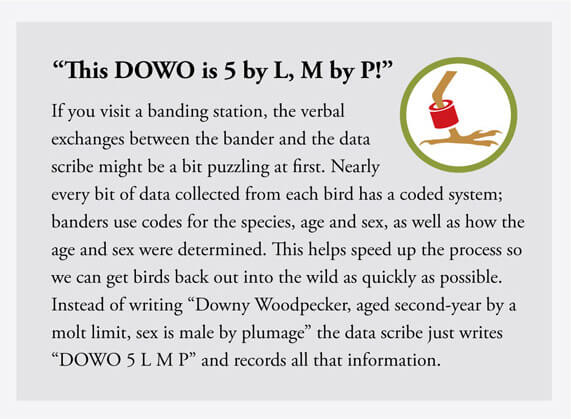
Adding new technology to time-tested methods
The basic banding process has not changed substantially over the past 100 years, but we have incorporated a number of new technologies that have greatly improved our ability to track birds. Over the past decade, a number of different tags have been developed that are small and lightweight enough to place on migratory songbirds. Geolocators use light-level measurements to infer latitude and longitude, while GPS tags use satellites to measure location with high precision. The banding process is still at the core of using any of these tags, as any tagged bird will also get an aluminum USGS band. The USGS band stays on the bird for life, while the tag will either be retrieved (by trapping the bird again) or eventually fall off the bird.
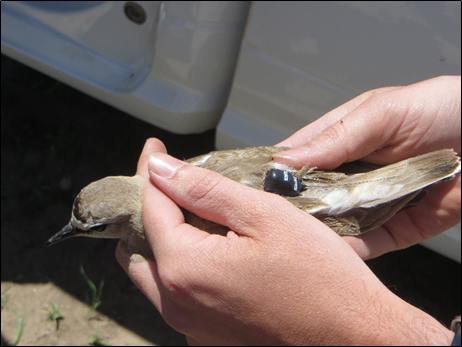
Mountain Plover with GPS tag. Photo: Colin Woolley
Visiting a Bird Banding Station
As we celebrate 100 years of research with the Bird Banding Laboratory, banding remains an invaluable tool in the ornithologist’s toolbox. It enables any study that relies on knowing birds as individuals. This fall, come visit one of our stations and get to know some individual birds!
Fall 2020 update: Due to precautions over COVID-19, we have reduced our banding effort this fall. We will not be operating our stations in Ridgway State Park, Grand Junction, and Rogers Grove Park in Longmont. Our station at Barr Lake State Park will remain open as well as our stations in Nebraska at Wildcat Hills and Chadron State Park. We will have limited banding at Chico Basin Ranch though the ranch remains closed to the public. Updates to our fall banding schedule will be posted on our banding homepage, check before you visit!
Click here to read the full press release from USGS about the Bird Banding Lab’s Centennial Anniversary.
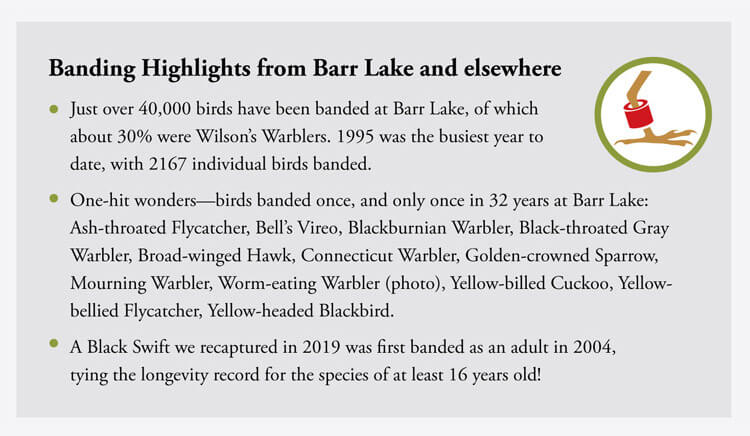
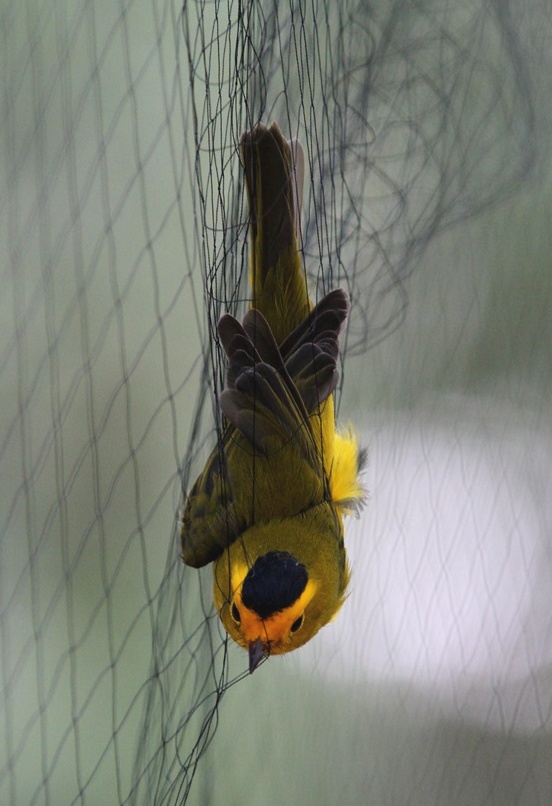
Wilson’s Warbler in mist net. Photo: Bird Conservancy of the Rockies
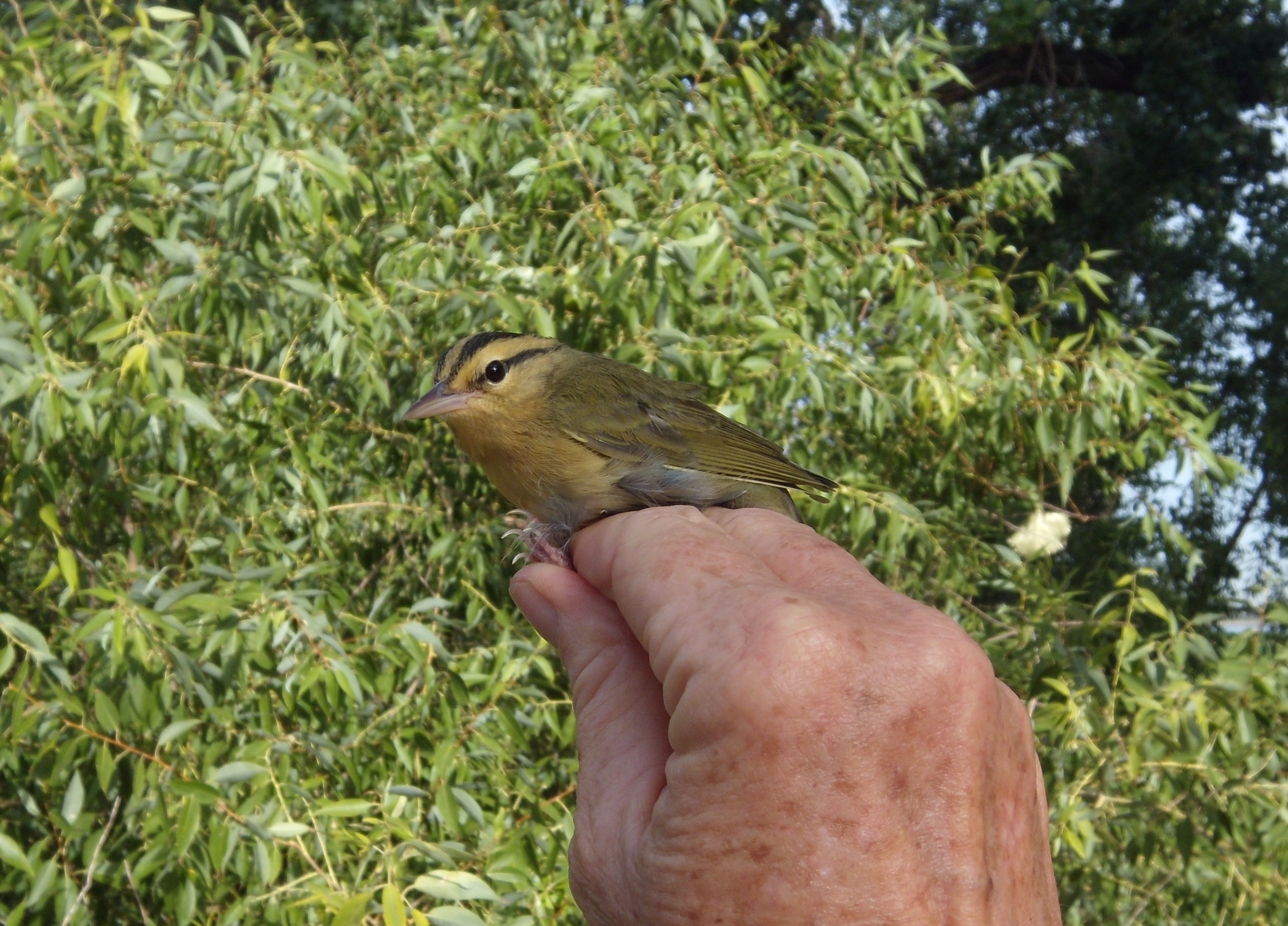
Worm-eating Warbler. Photo: Bird Conservancy of the Rockies
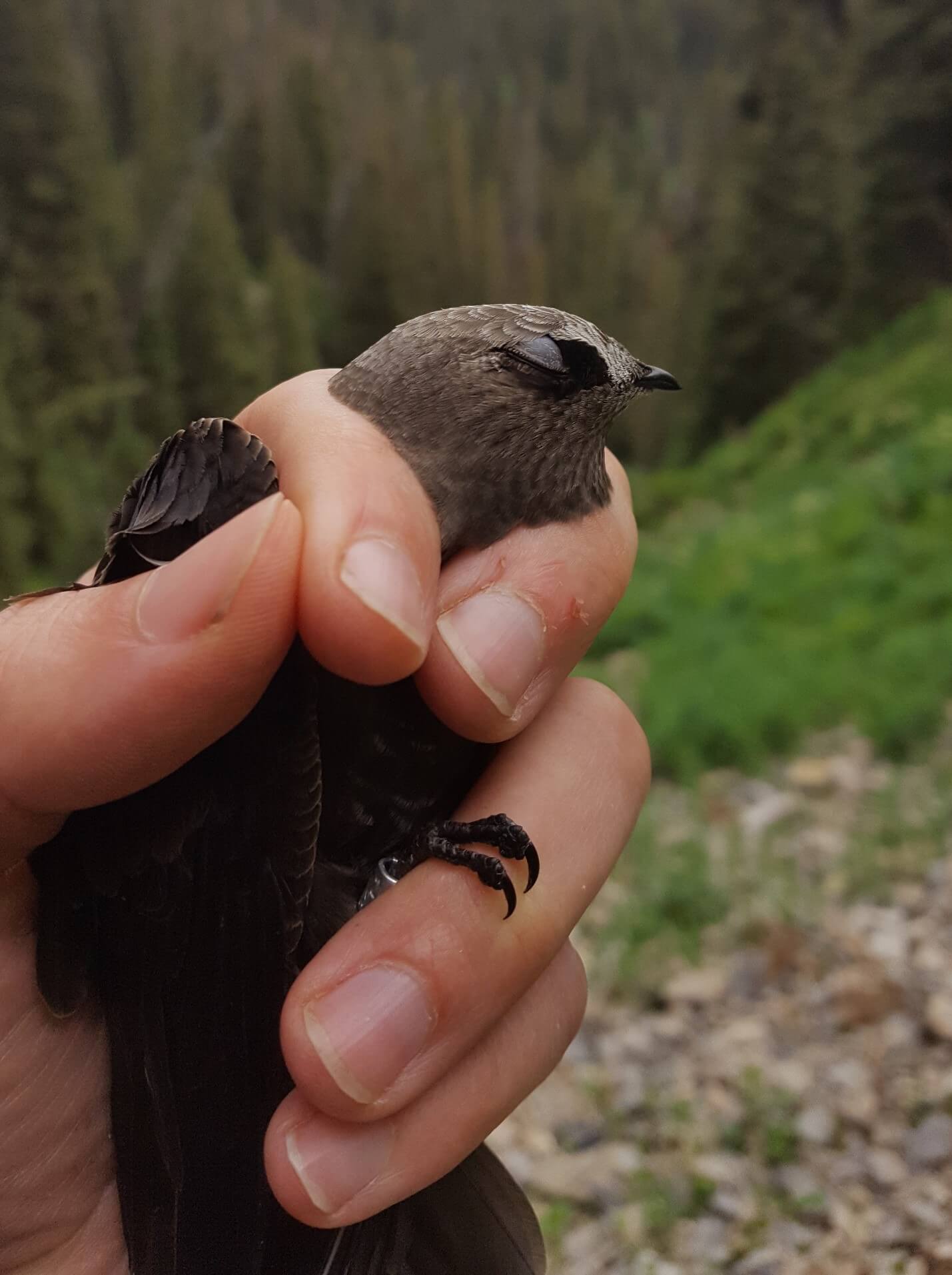
Black Swift. Photo: Colin Woolley


